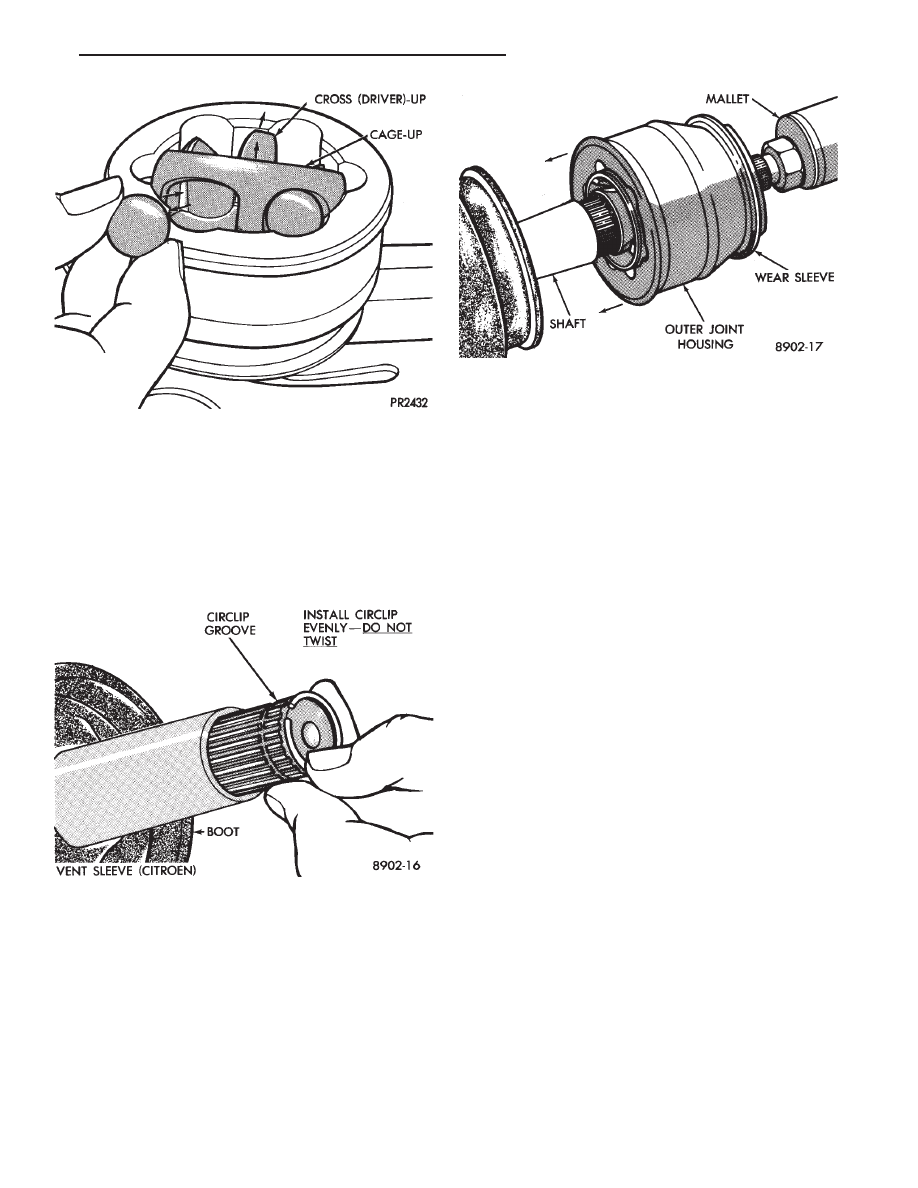Chrysler Le Baron, Dodge Dynasty, Plymouth Acclaim. Manual - part 86

(8) Insert balls into raceway by tilting cage and in-
ner race assembly (Fig. 7).
(9) Fasten boot to shaft. See Boots Install.
(10) On G.K.N. units insert the new circlip, pro-
vided with kit in shaft groove. Do not over expand
or twist circlip during assembly (Fig. 8). The S.S.G.
unit has a reusable circlip retainer that is an inte-
gral part of driver assembly.
(11) Position outer joint on splined end with hub
nut on stub shaft. Engage splines, and tap sharply
with mallet (Fig. 9).
(12) Check that circlip is properly seated by at-
tempting to pull joint from the shaft.
(13) Locate large end of boot over joint housing
checking that boot is not twisted.
(14) Fasten boot to housing. See Boots Install.
INTERMEDIATE SHAFT ASSEMBLY RECONDITION
Reconditioning of intermediate shaft assembly (Fig.
1), for Equal Length Drive Shaft System vehicles is
the same for manual and automatic transaxles.
INTERMEDIATE SHAFT ASSEMBLY
REMOVE
(1) Remove right driveshaft. See Driveshaft As-
semblies Remove.
(2) Remove speedometer pinion from the extension
housing (Fig. 2).
(3) Remove the two bolts which mount the bearing
assembly bracket to the engine block (Fig. 1).
(4) Remove assembly from transaxle extension by
pulling outward on the yoke (Fig. 3).
UNIVERSAL JOINT AND ROLLER
Disassemble
(1) Mark relationship of shaft to shaft to ensure
proper alignment at assembly. Apply penetrating oil
to bushings and remove snap rings.
(2) Support yoke in vise and place a socket large
enough to receive bushing on top of yoke. A 1-1/8
inch socket is suitable (Fig. 4).
(3) Striking socket with hammer will cause yoke to
move down and bushing to move up out of yoke into
socket.
(4) After removing one bushing, turn parts in a
vise and remove other bushing in same manner.
Assemble
(1) Hold cross in position between yoke ears with
one hand and start one bushing assembly into yoke
with other hand (Fig. 5).
(2) Continue to hold cross in position, then ham-
mer bushing assembly into yoke and install snap
ring.
(3) Install opposite bushing and snap ring in the
same manner.
Fig. 7 Inserting Balls into Raceway
Fig. 8 Installing New Circlip
Fig. 9 Position Joint onto Shaft Splines
Ä
SUSPENSION AND DRIVESHAFTS
2 - 41